10 Animals Found In Paraguay
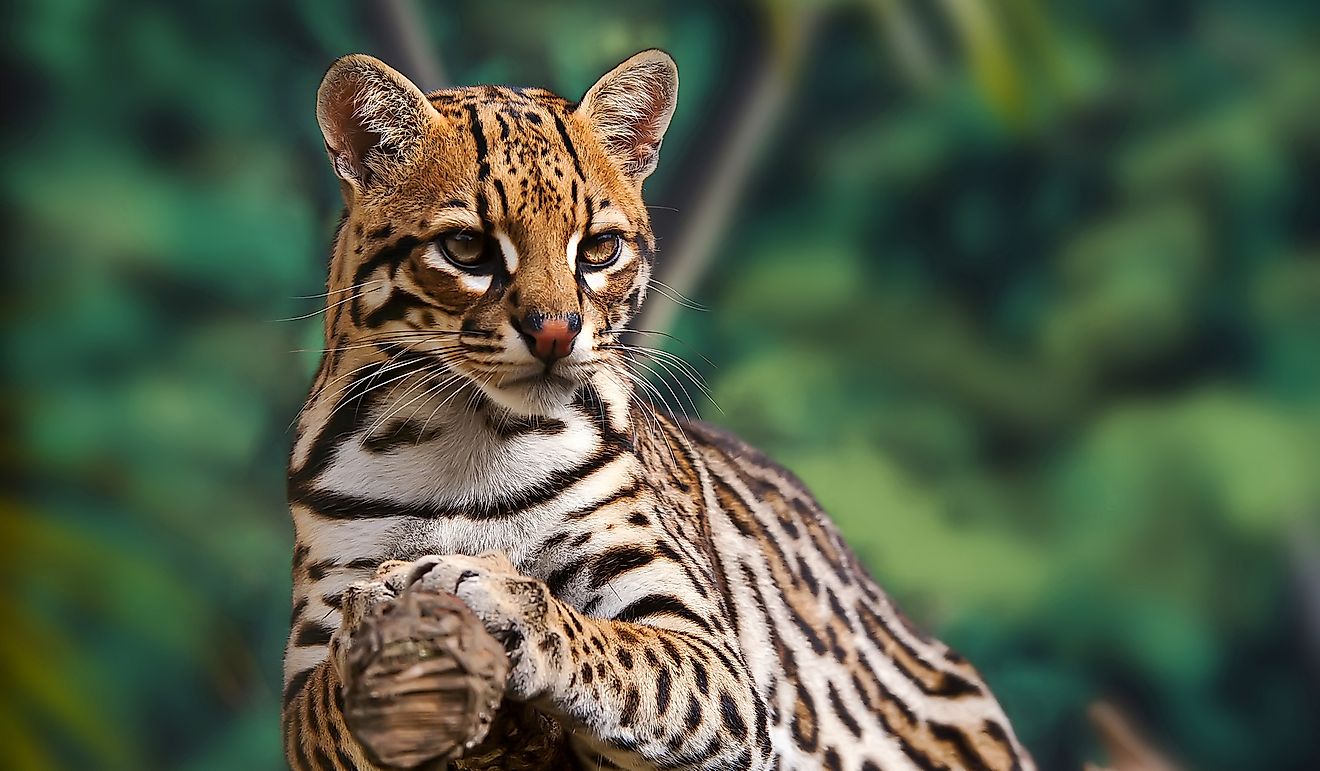
Paraguay is a landlocked nation located in South America. It harbors several ecological regions such as the Gran Chaco on the west comprising of grasslands, marshes, forests, and sand dunes, as well as the largest wetland called the Pantanal and the Atlantic rainforest found on the eastern parts of the country. These regions provide homes to a diverse number of birds, mammals, amphibians, and reptiles some of which are discussed below;
1. Jaguar
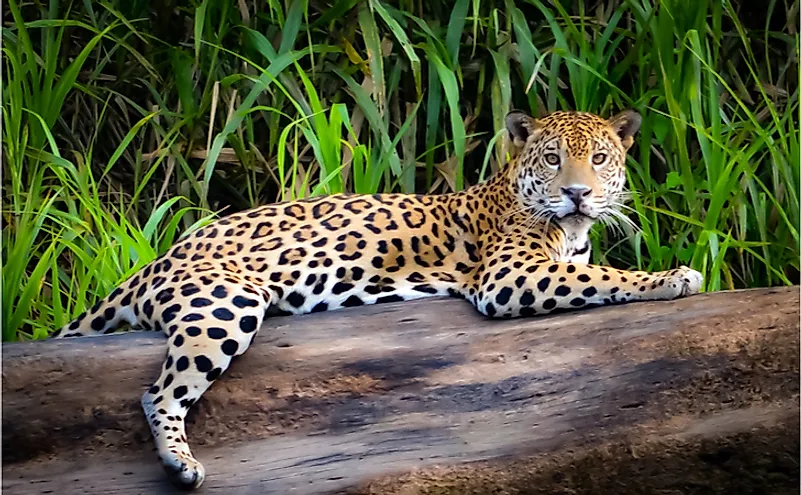
Jaguar is scientifically known as Panthera onca. It is the third-largest of the big cats’ family after the tiger and the lion. It weighs between 56 and 96 kilograms. Jaguars normally inhabit the dense rainforests and in the open plains. They enjoy swimming in water since they are good swimmers. The Jaguar is a lone ranger that only comes together during the breeding season. During this period, males aggressively protect their territory and guard the resident females against other invading males. Jaguars are carnivores that prey on pigs, deer, foxes, fish, frogs, and anaconda snakes. This animal can live up to 11to15 years.
2. Ocelots
Ocelots, also known as painted leopards, are scientifically known as Leopardus pardali. They are the largest of the small cats being almost twice the size of a house cat. They have short legs and tails with a pinkish nose. Their coats have distinctive markings of varied patterns against either orange, brown, or white coats. Ocelots are territorial nocturnal animals. The sleep on trees and bushes during the day and hunt in the night. They feed on frogs, iguanas, rabbits, fish, rodents, crabs, and birds. Females give birth to 1-3 kittens who mature and leave their mothers after 2 years to establish their separate territories.
3. Pampas Fox
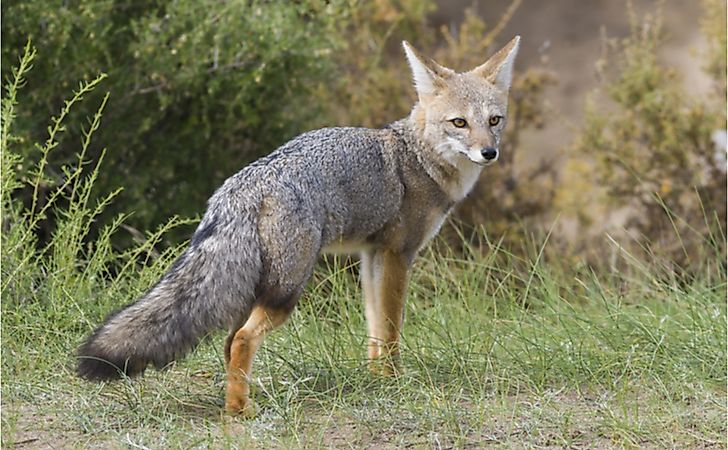
The Pampas fox is scientifically known as Lycalopex gmnocercus.These animals live in the pampas grasslands, ridges, deserts, and in the hills. Their bodies are grey with a pale underside and brown marks on their heads and legs. Pampas foxes enjoy a solitary and nocturnal life, though sometimes they may be active during the day. They are omnivores that feed on rabbits, rodents, birds, lizards, frogs, fruits, sugarcane, and domesticated livestock. Breeding occurs once a year between July and October with females giving birth to 3-5 cubs in a den. After about three months, the young begin to hunt with their parents. The lifespan of a Pampas fox is 14 years.
4. Puma
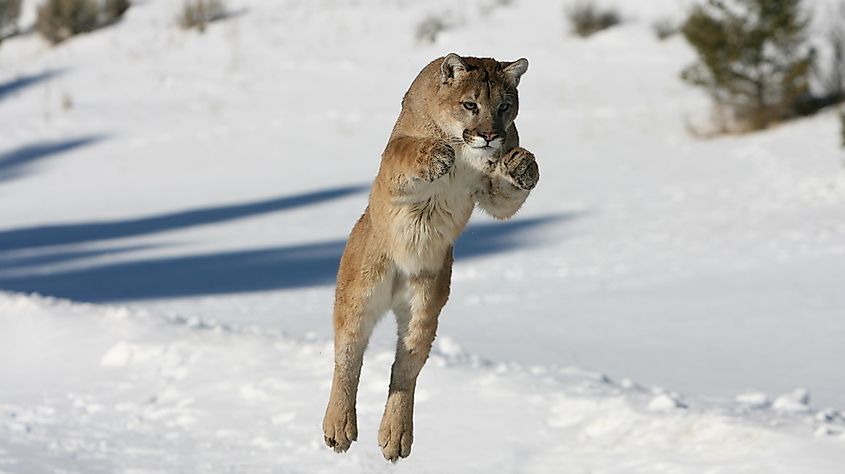
Pumas have plain colored fur ranging from silvery grey to reddish-brown. They are scientifically known as Felis concolor meaning cats of one color. They live in a variety of habitats ranging from forests, deserts, swamps, and prairies. Pumas are carnivores that possess powerful large paws and sharp claws. Their hind legs are large and more muscular to give them greater jumping and running abilities that make it easier for them to catch their prey. Examples of their prey are the elk, moose, deer, pigs, hares, capybaras, and sheep. A puma can live up to between 8 and 13 years.
5. Capybaras
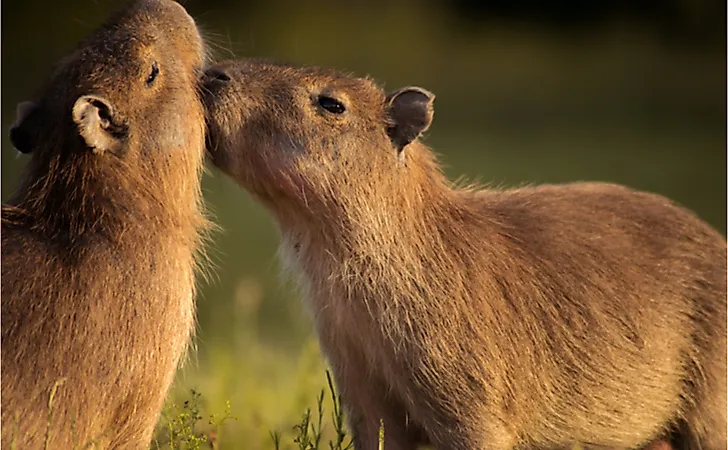
The capybaras are scientifically known as Hydrochoerus hydrochaeris. A native Amazon tribe calls it “Kapiyva” meaning the master of grasses. Capybaras is the world’s largest rodent. It is almost the size of a dog with webbed feet and is tailless. It weighs between 32 and 79 kg. They are hydrophilic inhabiting places such as estuaries, marshes, riverbanks, and along streams. Capybaras are herbivores that feed on aquatic plants, grasses, grains, melons, and squash. A capybara has a lifespan of 12 years.
6. Toucans
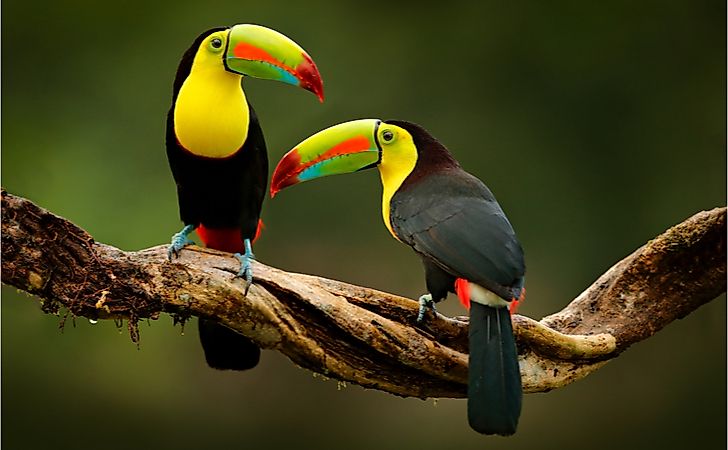
A toucan, belonging to a bird family known as Ramphastidae, is a medium-sized bird. It mostly dwells in rainforests where it builds its nest on trees. There are almost 40 different species of toucans. These birds are brightly marked with large and colorful bills. Almost their entire bodies are covered with black feathers except for their throat which has yellow or white feathers. Toucans are omnivorous birds eating mainly fruits, berries, seeds, eggs, insects, and small reptiles. When in danger of predation either by hawks or eagles they make loud noises to scare their predators and to alert other toucans to come to their rescue. Toucans are monogamous animals that live up to 20 years in the wild.
7. Giant Armadillo
The giant Armadillo is scientifically known as Priodontes maximus. It has a powerful claw, a carapace covered with bony scales, as well as a distinct conical-shaped head. Armadillos are nocturnal animals who mostly embrace solitary lives. Being carnivorous they mainly feed on termites, ants, spiders, and worms. After eating to their fill, they dig burrows for resting. Mating is once a year with females giving birth to a single pup. An Armadillo can live up to between 12-15 years.
8. Tapir
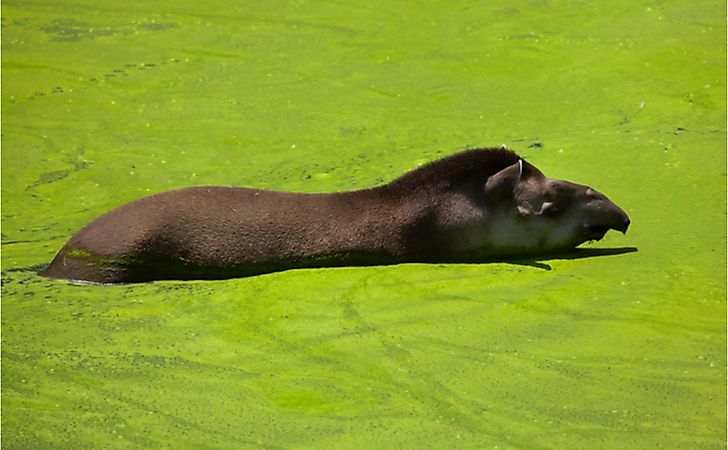
Tapirs are large mammals about the size of the donkey that resemble wild hogs. They possess distinct anterior snouts, round bodies, short legs, and stubby tails. Tapirs live in water point areas in the woods, rainforests, grasslands, and mountains. They are herbivores eating leaves and fruits. They prefer grazing together in social groups called candles. A tapir can live for a period of between 25 and 30 years.
9. Bush Dog
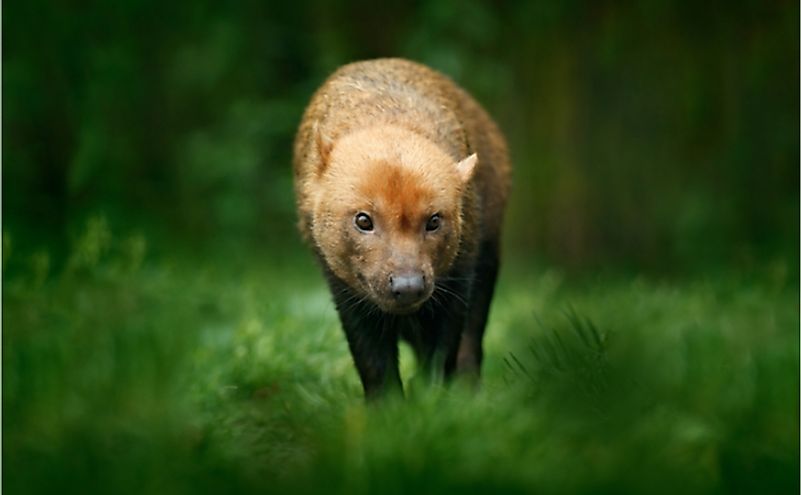
The bush dog, also called Savanna dog, is scientifically known as Speothos venaticus. It has a long reddish-brown fur on the coat, webbed feet, short rounded snout, and a short bushy tail. Its webbed feet make it an excellent swimmer and best suited in its habitat that includes wetlands, lowland forests, and seasonally flooded areas. The bush dogs are diurnal animals, as well as carnivores that feed on tapirs, large rodents, and birds. They have a lifespan of up to 10 years in the wild.
10. Jararaca
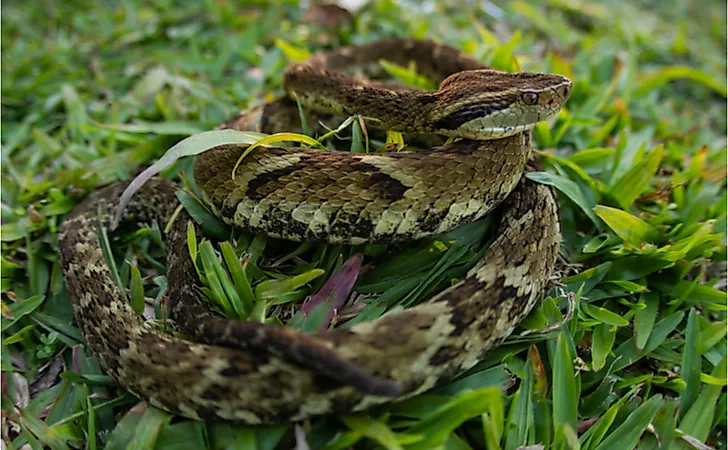
Jararaca is a slender terrestrial venomous pit viper. It is scientifically known as Bothrops jararaca.These snakes live in evergreen and deciduous tropical forests and savanna. The adult snakes are terrestrial and mostly feed on rodents and birds. Jararaca is an ovoviviparous snake species with females giving birth to around 20 young ones per clutch. The snake’s gestation period is 3 to 4 months depending on the availability of food. In the wild, these snakes can live up to 15 years.











